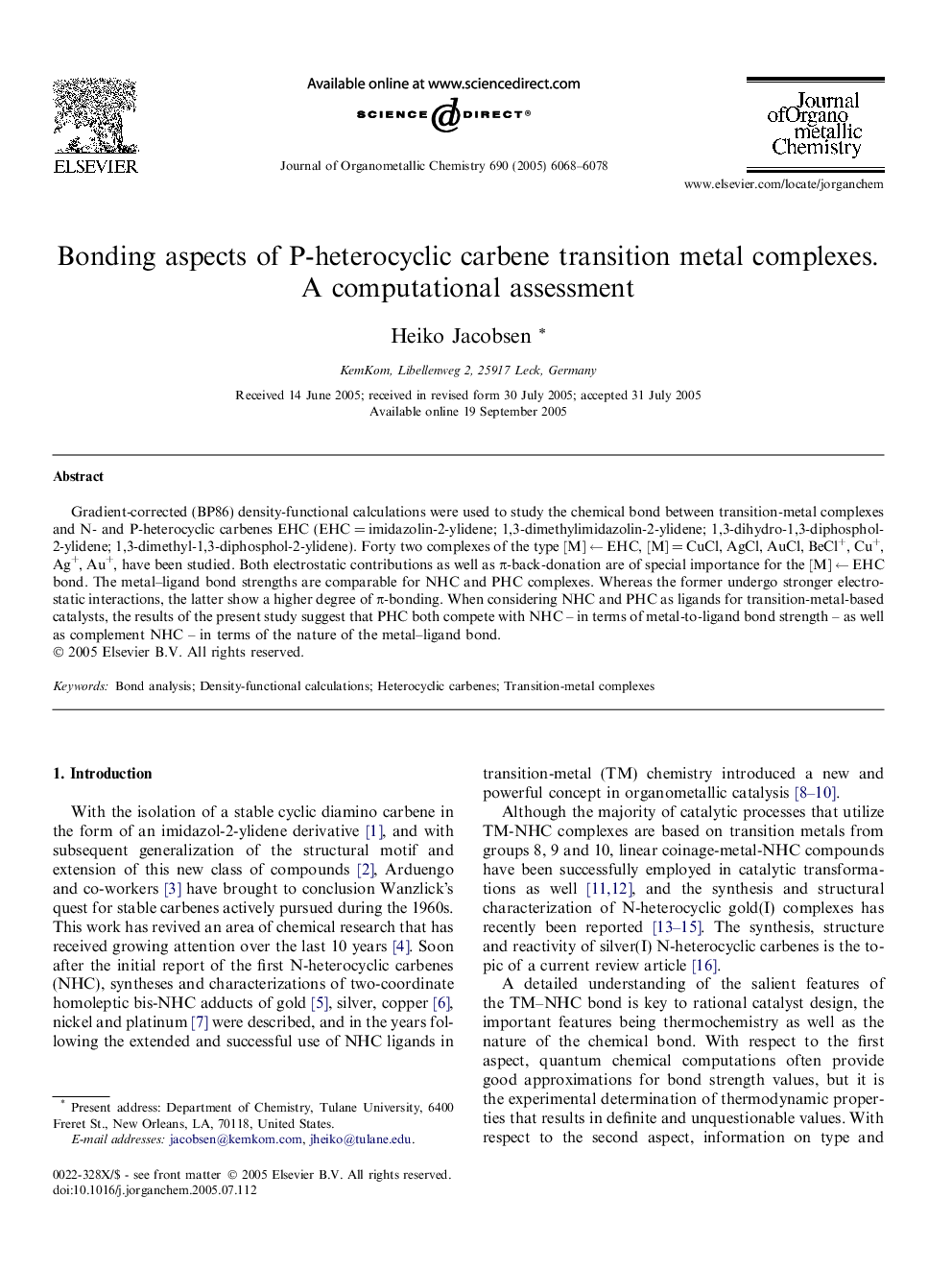| Article ID | Journal | Published Year | Pages | File Type |
|---|---|---|---|---|
| 1326122 | Journal of Organometallic Chemistry | 2005 | 11 Pages |
Gradient-corrected (BP86) density-functional calculations were used to study the chemical bond between transition-metal complexes and N- and P-heterocyclic carbenes EHC (EHC = imidazolin-2-ylidene; 1,3-dimethylimidazolin-2-ylidene; 1,3-dihydro-1,3-diphosphol-2-ylidene; 1,3-dimethyl-1,3-diphosphol-2-ylidene). Forty two complexes of the type [M] ← EHC, [M] = CuCl, AgCl, AuCl, BeCl+, Cu+, Ag+, Au+, have been studied. Both electrostatic contributions as well as π-back-donation are of special importance for the [M] ← EHC bond. The metal–ligand bond strengths are comparable for NHC and PHC complexes. Whereas the former undergo stronger electrostatic interactions, the latter show a higher degree of π-bonding. When considering NHC and PHC as ligands for transition-metal-based catalysts, the results of the present study suggest that PHC both compete with NHC – in terms of metal-to-ligand bond strength – as well as complement NHC – in terms of the nature of the metal–ligand bond.
Graphical abstractP-heterocyclic carbenes compete with N-heterocyclic carbenes as ligands for transition-metal-based catalysts in terms of metal-to-ligand bond strength, as well as complement NHC in terms of the nature of the metal–ligand bond.Figure optionsDownload full-size imageDownload as PowerPoint slide
